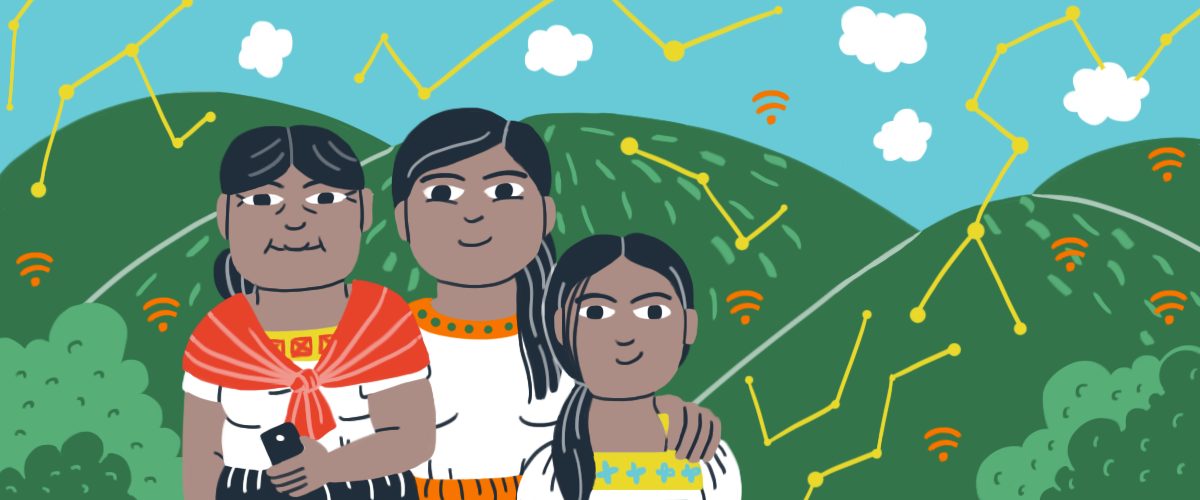Lee este post en español.
Last year, we launched a project to support Latin American organisations in reflecting and learning about how they use data and technology in their projects. As many organisations in the region are operating in environments where transparency, accountability and democracy are threatened, adopting a strategic approach to data and technology is an important part of creating sustainable solutions. This means that when working for social justice, civil society organisations need to be intentional about why they are applying certain approaches, how they design and implement them and which tools are most suitable for the context. Read the full series here.
One of the organisations we’re supporting is the Instituto de Liderazgo Simone de Beauvoir (ILSB), a feminist organisation from Mexico that strengthens local leaderships and promotes citizen participation. As a training centre, ILSB develops strategies to advance social justice, preparing community leaders who are committed to human rights, gender equality and inclusive participation from underrepresented people that make up a large population in Mexico. Their programmes touch on issues such as youth’s access to sexual and reproductive health and rights and the political participation of women, youth and Indigenous people. Through our targeted support, we engaged in a series of remote conversations and an in-person workshop with ILSB; below is some of what we learned.
Before tech, context
Using data and technology in social justice work is about understanding the lives of the people you’re working with and then figuring out what type of work you can do to best serve those communities. That work may include technology—but it may not. ILSB works with a variety of different groups whose lives and identities are shaped by multiple factors: origin, gender, race and ethnicity, and cultural background, to name a few.
Our conversations with ILSB have shown that while there are many opportunities for them to incorporate data and technology into their work, the mix of identities they serve means that they should proceed with caution. Before investing time and resources in developing new tools, it is important to comprehend the experiences of the communities they serve.
Technology as a means to an end, not an end in itself
Reflecting on past experiences of ILSB’s projects, we discussed the role of technology in their work. Their team talked about the ways that using tech wasn’t just about the tech, but the problems they were aiming to solve. Whichever ways the organisation chooses to use data and technology, they should be seen as a means to an end and not as ‘the end’ itself. To ILSB, this means that technology is best employed when it resonates the organisation’s mission as a whole. When thinking about adopting or creating tools, they want to have a clear understanding of what their objectives are. This includes asking questions like: Why should technology be used to solve this problem? Why should a new platform be developed? How will this tool be used?
Guided by these questions, teams like ILSB and other organisations can make sure they’re building technology not for its own sake, but for the sake of the communities with which they work.
Resources are limited—let’s use them wisely
A common issue for organisations in the region is limited resources. During our conversations we were reminded that using data and technology can be a resource-consuming effort for civil society organisations, so it must be done strategically. ILSB works with many groups, all of which engage with data and technology projects differently. To ensure that resources are used in ways that are useful to these communities, ILSB wants to tailor each project according to the needs of each of those groups.
Taking care of internal knowledge
Looking back on past technology-related projects, the ILSB team noted that it was hard for members of the organisation to easily access documentation. Identifying gaps in internal knowledge about their tech projects compromises internal assessments. This process has encouraged ILSB’s team to enhance the ways they document their projects, improve communications and delineate new common guidelines for internal processes, leading to more organisational memory.
Measuring impact is more than gathering numbers
ILSB works with widely different scenarios—from activists based in Mexico City to community leaders living in mountains outside of the city. Our conversations showed that the criteria used to measure impact must be adapted to those varying contexts. We also talked about how measuring the impact is more than collating the amount of times their platforms were visited. Technology projects might have a high number of views (they may even go viral), but that does not necessarily mean that they are contributing to ILSB’s goals of building critical leadership. The standing challenge of getting to know their audience is a fundamental step towards measuring their impact in relevant ways.
ISLB is not alone in these kinds of issues and questions. Through support work and research, our team at The Engine Room has found that when using data and technology for social justice work, organisations often face the challenges mentioned here. Our dialogues with ILSB serve as an example of how reflecting about the communities they work with—including the ways these communities may or may not use technology—is a process that equips organisations to make more strategic decisions about data and technology.
Illustrated by Matilde Salinas.

